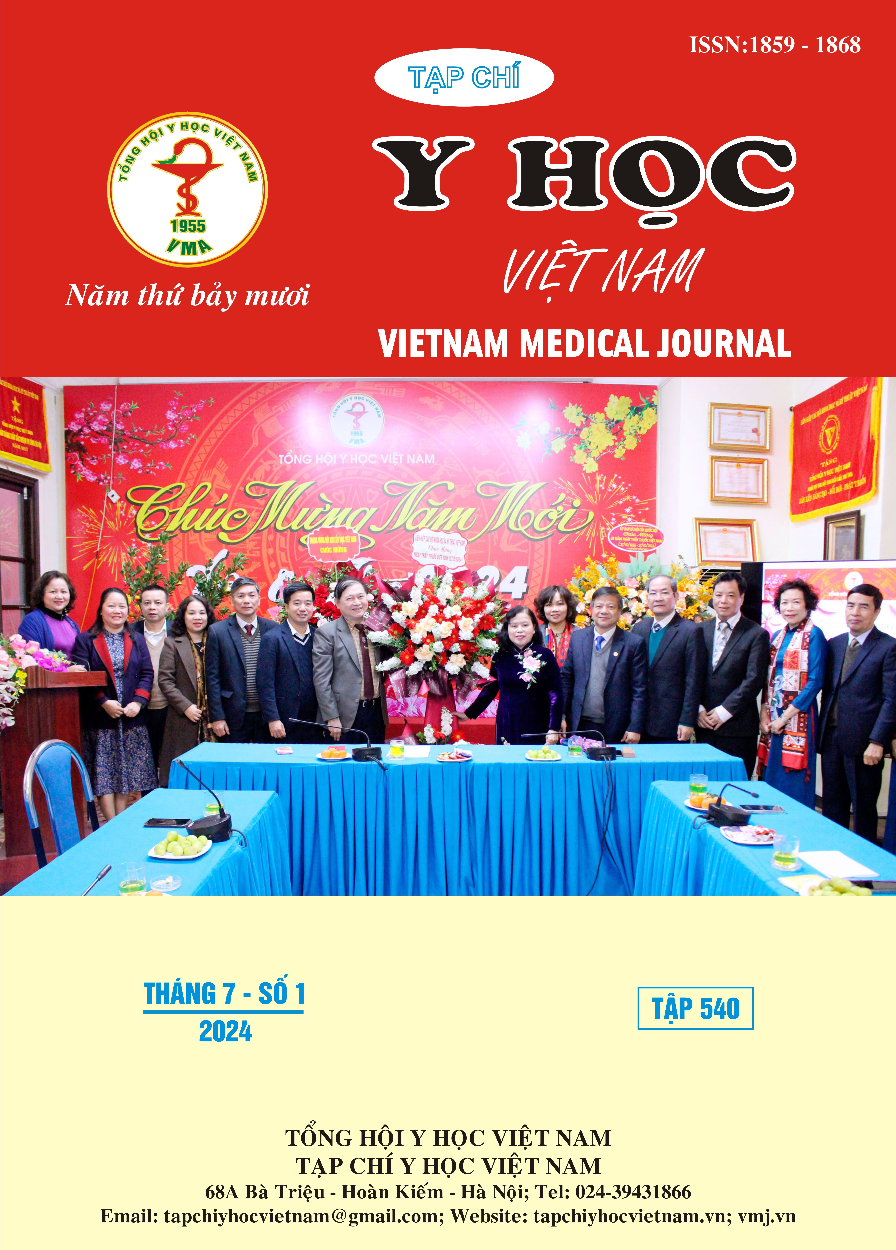CHARACTERISTICS OF ACUTE KIDNEY INJURY AFTER SURGERY AT NGHE AN GENERAL HOSPITAL
Main Article Content
Abstract
Objectives: to describe the characteristics of acute kidney injury (AKI) after surgery at the Department of Surgical Intensive Care - Nghe An General Hospital. Subjects and methods: an analysis observational study included 138 patients treated at the Department of Surgical Intensive Care, Nghe An General Hospital from April 2023 to March 2024. Results: 36.9% patients developed acute kidney injury after surgery. AKI stage 3 according to KDIGO accounted for majority of the patients (86.8%). The average BUN and creatinine levels after surgery were 12.3 ± 5.5 (mmol/L) and 155.4 ± 10.4 (µmol/L), respectively, and statistically higher than the values on admission (p = 0.011). There were 39/51 (76.4%) AKI patients in the study required continuous hemodialysis. Anuria/oliguria were common indications for hemodialysis. The average creatinine levels in the fatal group were 484.7 ± 26.5 (µmol/L), which were statistically higher than those in the survival group (p = 0.01). The rate of continuous dialysis in the fatal group was statistically higher than that in the survival group (57.7% versus 10.4%, p = 0.02). Conclusion: The rate of acute kidney injury after surgery was relatively high and mainly stage III according to KDIGO. Among the patients with AKI, hemodialysis was common. The degree of AKI after surgery was related to mortality
Article Details
Keywords
Acute kidney injury (AKI), after surgery, hemodialysis, mortality
References
2. Khwaja A. (2012). KDIGO clinical practice guidelines for acute kidney injury. Nephron Clin Pract, 120(4), c179-184.
3. Bell S. và Prowle J. (2019). Postoperative AKI—Prevention Is Better than Cure?. JASN, 30(1), 4–6.
4. Hahn R.G. (2010). Volume kinetics for infusion fluids. Anesthesiology, 113(2), 470–481.
5. Grams M.E., Sang Y., Coresh J. và cộng sự. (2016). Acute Kidney Injury After Major Surgery: A Retrospective Analysis of Veterans Health Administration Data. Am J Kidney Dis, 67(6), 872–880.
6. Nguyễn Trường Sơn (2016). Khảo sát tình hình tổn thương thận cấp ở bệnh nhân điều trị tại khoa hồi sức bệnh viện Chợ Rẫy. Luận văn chuyên khoa II. Khoa Y – Đại học Quốc Gia TP HCM.
7. Hà Hoàng Kiệm (2023). Lọc máu điều trị thay thế thận. Bệnh thận tiết niệu, Nhà xuất bản Y Học, tr. 115.
8. Lê Thị Diễm Tuyết (2010). Nghiên cứu đặc điểm lâm sàng, cận lâm sàng và điều trị suy thận cấp tại khoa Điều trị tích cực Bệnh viện Bạch Mai. Luận văn Tiến sĩ. Trường Đại học Y Hà Nội.
9. Nguyễn Thế Anh, Tô Hoàng Dương (2021). Đánh giá thực trạng tổn thương thận cấp theo thang điểm RIFLE ở bệnh nhân điều trị tại khoa hồi sức tích cực và chống độc. Tạp chí Y học Việt Nam; 508(1).
10. Quách Hoàng Giang (2021). Yếu tố nguy cơ tổn thương thận cấp sau phẫu thuật tại khoa hồi sức cấp cứu. Luận văn chuyên khoa cấp II. Trường Đại học Y dược TP HCM.


